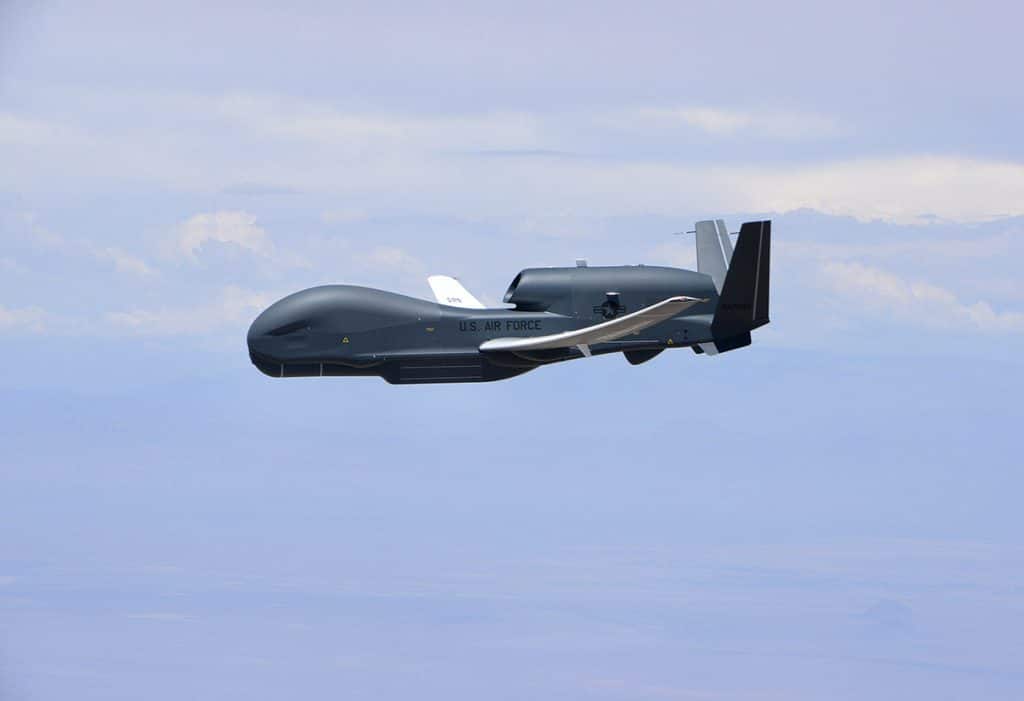Report calls for using HALE drones for ‘deterrence by detection’ military strategy
May 8, 2020 | AUVSI News

According to a new study by Washington’s Center for Strategic and Budgetary Assessments (CSBA), the fleet of high-flying, long-endurance unmanned aircraft operated by the United States and its allies could be a vital hedge against efforts by Russia and China to expand their borders and influence.The report, “Deterrence by Detection: A Key Role for Unmanned Aircraft Systems in Great Power Detection,” says Russia and China can conduct rapid strikes on neighboring countries on their peripheries, often before the United States or its allies could react. “The U.S. armed forces are poorly configured to meet these challenges, which require long-duration monitoring rather than episodic coverage. Although the Defense Department has the requisite existing and near-term capabilities to do so, namely non-stealthy long-endurance UAS, it needs to develop new concepts of operations and organizations to employ those capabilities effectively,” the report says.The report stresses that the UAS are non-stealthy; in fact, having the countries know they are being surveilled all the time is the point.”The logic that underpins the approach should be familiar to policemen and parents,” the report says. “It is that potential transgressors are less likely to act if they know they are being watched. Specifically, the concept of “deterrence by detection” rests on the premise that our adversaries are less likely to commit opportunistic acts of aggression if they know they are being watched constantly and that their actions can be publicized widely.”This could be best handled by UAS, the report says, as they are capable of monitoring key areas around the clock. They are also in the inventory of the U.S. and allied nations.”CSBA analysis shows that implementing “deterrence by detection” would require 46 airframes in the Western Pacific and another 46 in Europe, for a total of 92 aircraft,” the report says. “Additional UAS would be required for ISR missions beyond those described here.”The requirement could be met by shifting existing UAS from other theaters and missions to the Western Pacific to monitor China and to Europe to keep eyes on Russia. The annual operating cost would be $1.4 billion a year, based on figures from the Congressional Budget Office.However, as all the aircraft would come from existing stocks that would be kept flying anyway, the report says the move wouldn’t require any additional spending.”Split among the United States and its many allies and partners in the Western Pacific and Europe, the estimated cost per country should remain affordable relative to the expected security gains,” the report says.Global HawkOne of the high-flying, long-endurance UAS that would be useful for such missions is Northrop Grumman’s venerable Global Hawk, capable of spending an entire day over an area of interest.The concept of deterrence by detection “to me, that defines Global Hawk as it exists today,” says John Salafia, Global Hawk deputy program manager at Northrop Grumman.The aircraft, which operates out of two U.S. bases and three forward international locations, flew tens of thousands of hours of intelligence, surveillance and reconnaissance (ISR) missions in 2019 and 2020, which Salafia says made up two-thirds of all ISR missions and half of all Battlefield Airborne Communications Node (BACN) missions.”I believe that’s evidence of the value that’s been provided day in and day out, right now,” Salafia says.Air Force plansThe U.S. Air Force, so far, has different plans for its Global Hawk fleet. Namely, it plans to mothball 24 Global Hawks, all its Block 20 and 30 aircraft, leaving the Block 40s for ISR missions. To replace the BACN missions Salafia referenced, the service would buy new manned E11-A aircraft to pick up that duty.Such a move would obviously make CSBA’s proposal for drone surveillance more difficult, and Salafia says, “that loss of capacity needs to be understood to make sure the country is not taking on an untenable risk going forward.”He says the Global Hawk operates alongside spy aircraft such as the U2 as well as surveillance satellites, and “if we’ve got all of those employed now, performing that mission, it’s a very thoughtful, layered ISR capability and communications mission that is serving us very well today.”Block 20 Global Hawks currently conduct BACN missions to provide battlefield communications, which Salafia says led to the saying, “when boots are on the ground, Global Hawk’s around.”Block 30 aircraft carry payloads for imagery, synthetic aperture radar and signals intelligence. Block 40s, the ones the Air Force wants to keep, carry the MP-RTIP, or Multi-Platform Radar Technology Insertion Program, which can track thousands of moving targets on the ground.The block numbers reflect mission capability, not the age of the aircraft, and some Block 30s were delivered after the Block 40s.”Global Hawk’s a tremendous and innovative capability,” Salafia says. “It’s certainly something the Air Force is looking for, and they’ve actually got it now.”The CSBA report shows one way the Air Force might use that capability.Below: Northrop Grumman’s high altitude, long endurance Global Hawk. Photo: Northrop Grumman


